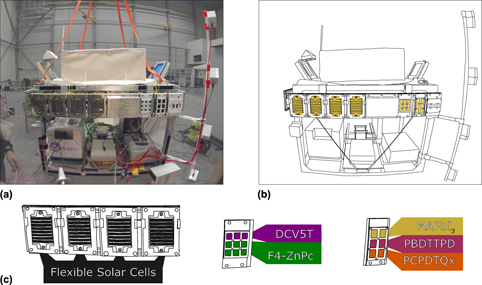Article contents
Methodology of the first combined in-flight and ex situ stability assessment of organic-based solar cells for space applications
Published online by Cambridge University Press: 18 June 2018
Abstract

One of the key aims of the OSCAR project (Optical Sensors based on CARbon-materials)—in the framework of the REXUS/BEXUS program—was to explore the use of organic-based solar cells for (aero)space applications through the in-flight investigation of devices’ performance during a stratospheric balloon flight. Next to the in-flight experiments, complementary lab stability assessment tests were performed. In this contribution, both the in-flight and lab experimental methodology and the corresponding technical aspects will be discussed in detail. Furthermore, attention will be paid to the issues of packaging and radiation. The importance of the OSCAR-balloon experiment is not only that it has demonstrated for the first time the use of organic-based solar cells in (aero)space conditions but also that it can be considered as the pioneering start of specific stability assessment methodologies for organic-based solar cells for (aero)space applications.
Keywords
- Type
- Invited Article
- Information
- Journal of Materials Research , Volume 33 , Issue 13: Focus Issue: Stabilization of Organic Electronic Materials and Devices , 14 July 2018 , pp. 1841 - 1852
- Copyright
- Copyright © Materials Research Society 2018
Footnotes
These authors contributed equally to this work.
References
REFERENCES
- 10
- Cited by



